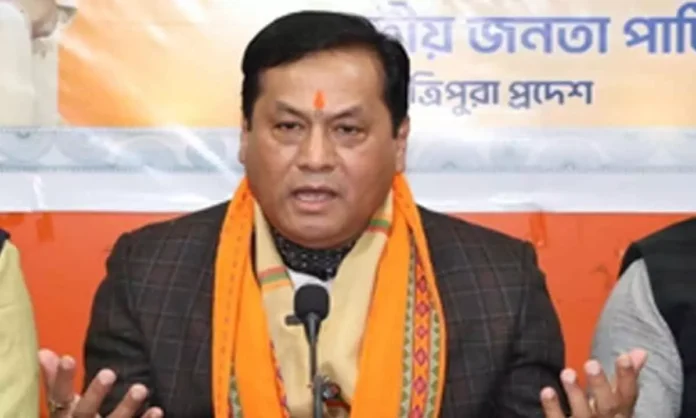Union Minister of Ports, Shipping, and Waterways, Sarbananda Sonowal, announced plans to link Tripura with major Indian ports, including Kolkata, Visakhapatnam, and Paradip, via the Bay of Bengal through Bangladesh. This initiative is set to transform the transportation landscape of India’s northeastern region, providing a more efficient and cost-effective route for goods and passengers.
Strategic Importance of the Waterway
The proposed waterway will utilize the Gomati River in Tripura, connecting it to Bangladesh’s Meghna River system. This linkage will facilitate direct access to the Bay of Bengal, significantly reducing the distance and transportation costs between Tripura and major Indian ports. Currently, goods from Tripura must traverse a circuitous land route through the Siliguri Corridor, often referred to as the “Chicken’s Neck,” which is both time-consuming and costly. The new waterway route promises to cut down this distance substantially, enhancing trade efficiency.
Infrastructure Developments
To realize this vision, the Ministry of Ports, Shipping, and Waterways has initiated several infrastructure projects. A notable development is the establishment of an inland waterway terminal at Srimantapur in Tripura’s Sepahijala district. This terminal, situated along the India-Bangladesh inland waterway protocol route, is equipped with modern facilities to handle cargo and passenger movement, thereby bolstering trade between the two nations. Additionally, the construction of jetties on the Gomati River is underway to support the operationalization of this route. These jetties will serve as pivotal points for loading and unloading goods, ensuring seamless movement along the waterway.
Collaborative Efforts with Bangladesh
The success of this project hinges on close collaboration with Bangladesh. Both nations have been working together to enhance inland waterway connectivity, recognizing its potential to boost bilateral trade and regional development. The Sonamura-Daudkandi protocol route, which links Tripura’s Gomati River to Bangladesh’s Meghna River, stands as a testament to this cooperation. This route has already been operationalized for cargo movement, setting a precedent for future initiatives.
Economic and Social Implications
The establishment of this waterway is poised to have far-reaching economic and social impacts. For businesses in Tripura and the broader northeastern region, it offers a more economical and efficient means of transporting goods to major markets and ports. This could lead to increased trade volumes, attract investments, and stimulate industrial growth in the area.
From a social perspective, improved connectivity can enhance access to essential goods and services, contribute to job creation in logistics and related sectors, and foster cultural exchanges between India and Bangladesh. Moreover, by providing an alternative to the congested land routes, the waterway can alleviate traffic bottlenecks and reduce the environmental impact associated with road transportation.
Future Prospects
Looking ahead, the successful implementation of the Tripura-Kolkata waterway via Bangladesh could serve as a model for similar projects aimed at integrating the northeastern states with the rest of India and neighboring countries. It underscores the strategic importance of inland waterways in enhancing regional connectivity and economic development.
Furthermore, this initiative aligns with India’s broader “Act East” policy, which seeks to strengthen ties with Southeast Asian nations through improved connectivity and economic cooperation. By leveraging its geographical proximity to Bangladesh and the Bay of Bengal, Tripura is poised to become a pivotal player in regional trade dynamics.
The announcement by Union Minister Sarbananda Sonowal marks a significant milestone in India’s efforts to enhance connectivity in its northeastern region. The proposed waterway linking Tripura with major ports via Bangladesh is not just a transportation project; it is a catalyst for economic growth, regional integration, and strengthened bilateral relations between India and Bangladesh. As the project progresses, it holds the promise of transforming the socio-economic landscape of Tripura and its neighboring states, ushering in a new era of prosperity and collaboration.



